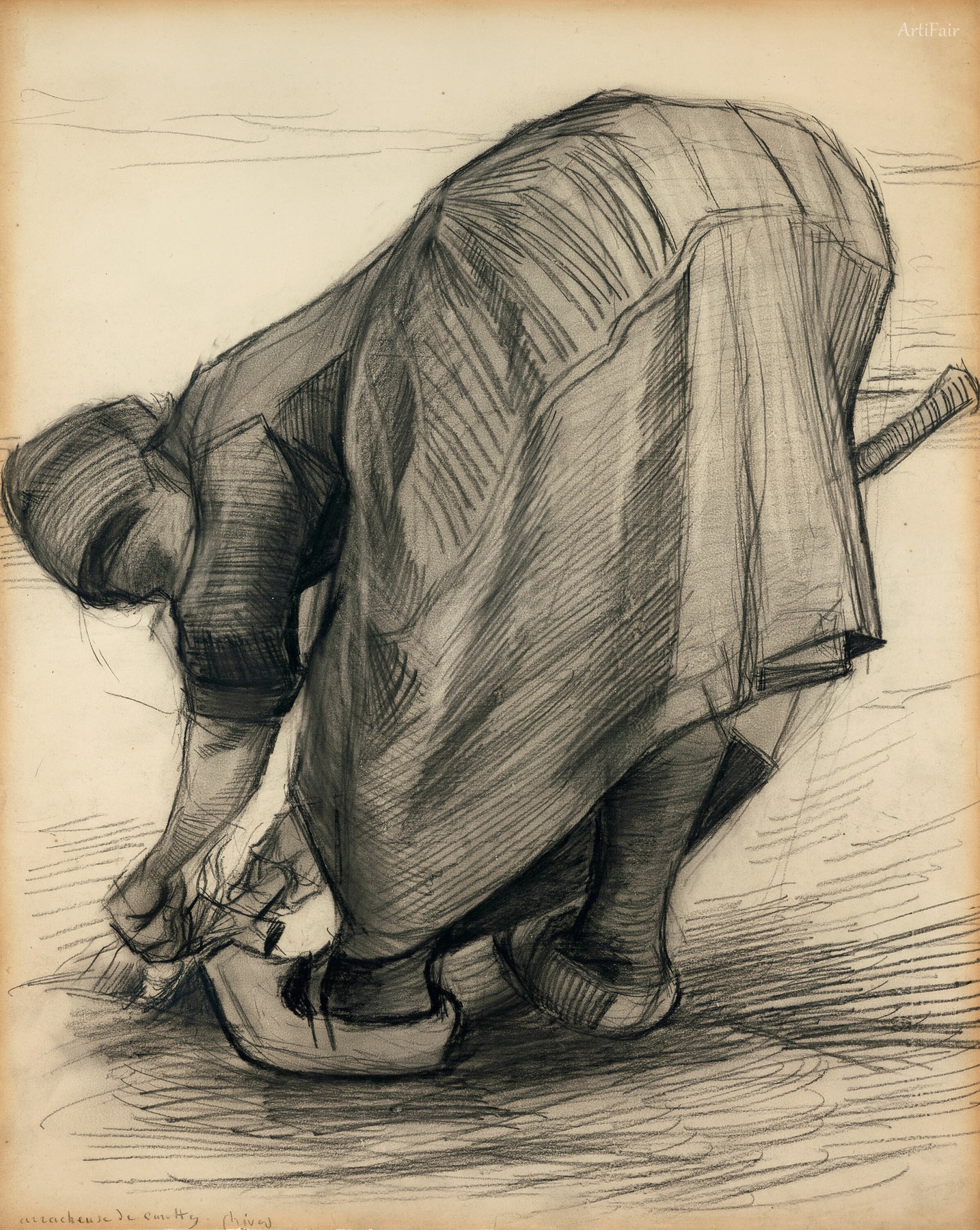
Art Appreciation
In this evocative drawing, a figure bends low to the ground, their posture intimate and focused, as they pull a carrot from the earth. The garment draped around their body flows dramatically, creating a contrast between the stiffness of the fabric and the organic form of nature being unearthed. Each crease and shadow eloquently captures the depth of their labor; the earthy tones evoke a sense of connectedness to the land, encapsulating a moment of humble toil. The artist's use of dynamic lines draws the viewer's eye across the contours of the figure and into the foreground, linking the human experience with the natural world. The energy of the movement is palpable; you can almost hear the rustle of the carrot's leaves against the soil and feel the dirt cling to the worker's fingers, a tactile reminder of the earth's embrace.
Van Gogh’s choice of a monochrome color palette adds an emotional weight to the piece. The contrasts between light and dark visually underscore themes of labor and the toil of rural life. They enhance the figure's dedication, while also invoking a certain nostalgia for agrarian life which would have resonated deeply in the late 19th century when rural communities faced the complexities of industrialization. In our modern context, this work serves as a reminder of the simplicity and struggles of the human condition. It invites us to reflect on our own connections to the land and the eternal cycle of work and reward, establishing Van Gogh's significance in capturing both the beauty and the burden of everyday life.